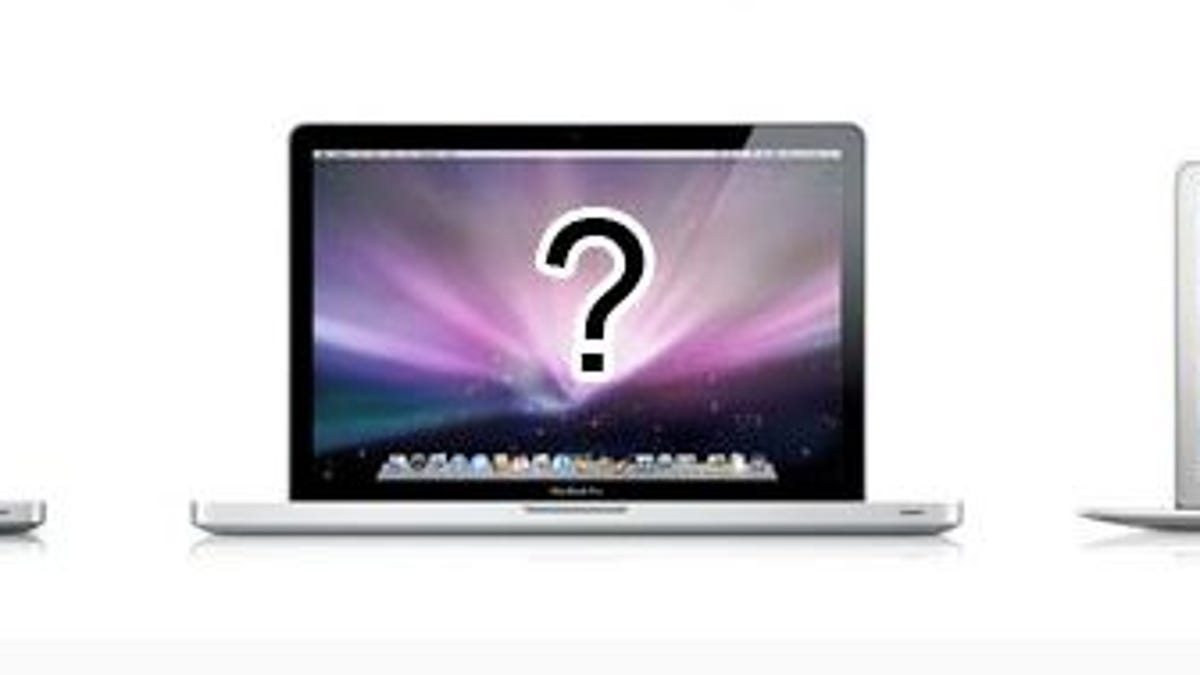Apple's new MacBooks: Which one is right for you?
Apple released a slew of new portables, and the choices can be overwhelming. We break it down by which users each is aimed at to make things a little less painless.

As you've perhaps heard elsewhere on Crave, Apple on Tuesday held a pretty broad-reaching laptop event in which it updated its entire line of portable computers.
Sure, there's new tech and spec bumps to talk about, but the really interesting part is that Apple dramatically simplified its line. While the 17-inch model is still around (with a modest upgrade to the included RAM), the real stars are the new MacBook and the 15-inch MacBook Pro, as well as the lust-worthy MacBook Air. If you're in the market for a new OS X portable, you've got some choices to make.
Each laptop is geared toward a certain kind of user. These users, in turn, each likely have a primary feature they want out of a laptop: portability, power, or price. While it'd be nice to have all three, that's unrealistic, though these machines are all fairly close to each other on all three fronts.
The power user: MacBook Pro
Pros: If you're going for power of speed on the go, like for video editing or encoding, then you're looking for the MacBook Pro. It boasts a high-resolution display, an ExpressCard slot, and Firewire 800 for high-speed data transfer. The 15.4-inch LED screen is bright enough for editing in daylight while still keeping power consumption low enough that you can stay in the park. And it's powered by dual graphics processors: an Nvidia 9400M GPU and a dedicated 9600M GT dedicated GPU. It also has the fastest processor option of the new MacBooks with a 2.8GHz Intel Core 2 Duo.
Cons: The Pro is the largest of the MacBooks, with the new version weighing 5.5 pounds at just under one inch thick. Because of the 15.4-inch screen, it has the largest footprint. In all, the weight-to-usability trade-off isn't a bad one, but the size will be a deal-breaker for some.
The frugal user: MacBook
Pros: The MacBook is the least expensive of the new laptops, but it packs enough juice to do pretty much anything most users would need. The 13.3-inch LED-backlit screen is made for Web browsing and watching videos. It's small enough that you could carry it to and from work or school without too much fatigue. The 2.0 or 2.4GHz Core 2 Duo processors won't win any races, but a user would be hard-pressed to find issues with its performance, and it now features Nvidia's 9400M GPUs, though not dedicated like the MacBook Pro's.
Cons: At 4.5 pounds, the MacBook might be a little too large to keep with you at all times, but it's not bad for shuttling around once or twice a day. The integrated Nvidia 9400M is fine for most video functions, but if you're looking for hardcore game play or any real video editing or effects work, you'll want to look at the MacBook Pro. There were rumors that Apple was preparing a sub-$1,000 MacBook, but instead it raised the entry price by $100, though you do get a SuperDrive for the price instead of a combo drive. Still, the price point has never been popular among fans.
The mobile user: MacBook Air
Pros: The Air is by far the lightest and most svelte MacBook ever. If you're looking for something truly portable--say you go from class to class a few times a day or move job sites several times--the 3-pound notebook is about perfect. It shares the MacBook's 13.3-inch LED-backlit screen, though in a much thinner frame. It now features the same integrated Nvidia 9400M as the MacBook, but still has the sub-par Intel Core 2 Duo processors (that max out at 1.8GHz). Still, it's light enough that you might even forget it's there when you're on the go, which is the point of this Apple.
Cons: The MacBook Air is expensive, at least for what it is, but consumers seem to be willing to pay for the portability. There are other sacrifices to be made as well, such as a lonely single USB port and no internal optical drive, which is a turnoff for a lot of people. Most consumers, though, don't use either on a day-to day-basis, which is how current users make due, and they don't seem to mind very much.
Since this is the first significant portables upgrade since the original G4 PowerBooks several years ago, it makes it a great time to buy. Chances are you're one of the types I cited above, and if you can figure out which, your choice may be much more simple.
For complete coverage of the Apple notebook news, see "Apple polishes up its MacBook line."